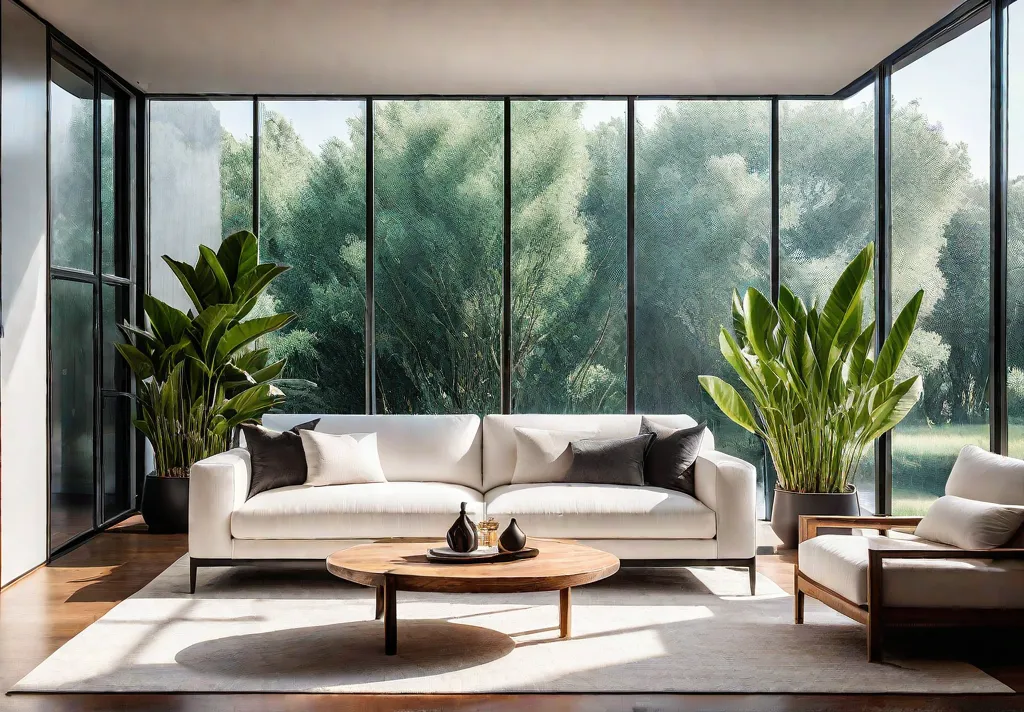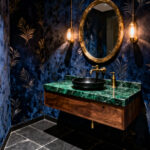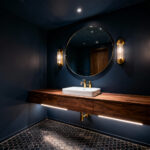Have you ever stepped into a living room that felt like a serene oasis, where the beauty of nature seamlessly blended with the comfort of your indoor space? This is the essence of biophilic design – incorporating natural elements into the built environment to improve our well-being and connection to the great outdoors.
As a Los Angeles-based landscaper and home decor enthusiast, I’ve seen firsthand how transformative biophilic design can be. By strategically incorporating natural features like plants, natural light, and organic textures, you can create a living room that looks stunning, promotes relaxation, boosts creativity, and enhances your overall quality of life.
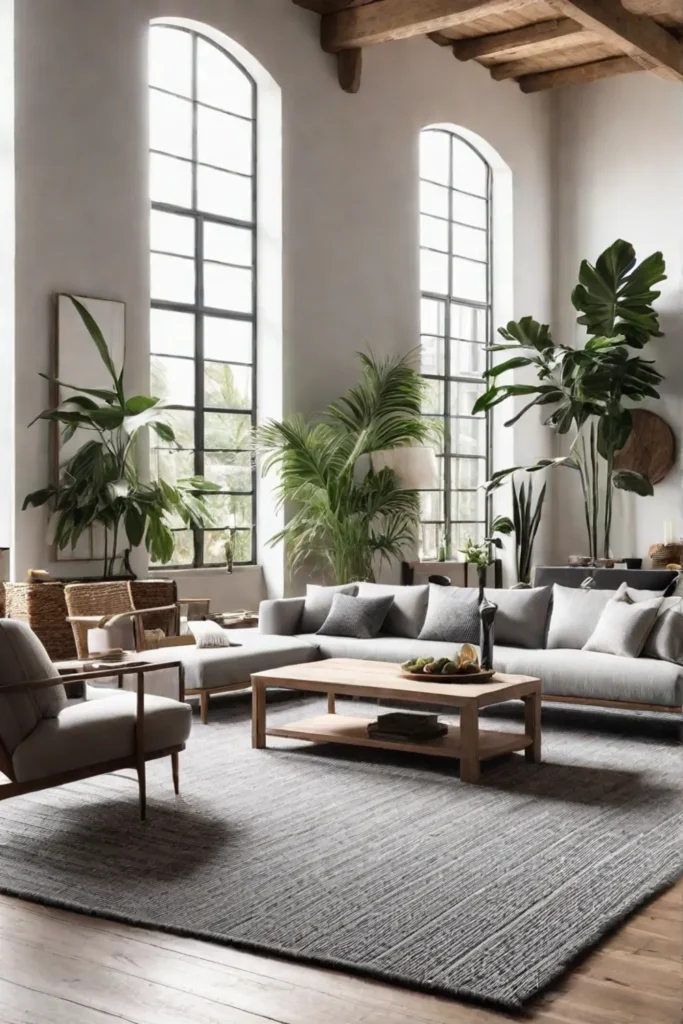
In this article, we’ll explore modern living room ideas that bring the outdoors in, helping you create a visually appealing and rejuvenating space for your mind and body. Whether you’re a homeowner looking to refresh your living room or a renovator seeking inspiration, these biophilic design principles will guide you toward a living space that’s truly in tune with nature.
The Allure of Biophilic Design
Biophilic design is about reconnecting with the natural world, even in the heart of our indoor environments. This holistic approach to design combines architecture, interior design, and landscaping to create spaces that mimic the beauty and serenity of the great outdoors.
Biophilic design is based on the idea that humans have an innate desire to connect with nature. Studies have shown that exposure to natural elements can profoundly impact our physical and mental well-being. For example, simply gazing at a view of nature can lower blood pressure and heart rate while reducing stress-inducing cortisol levels.
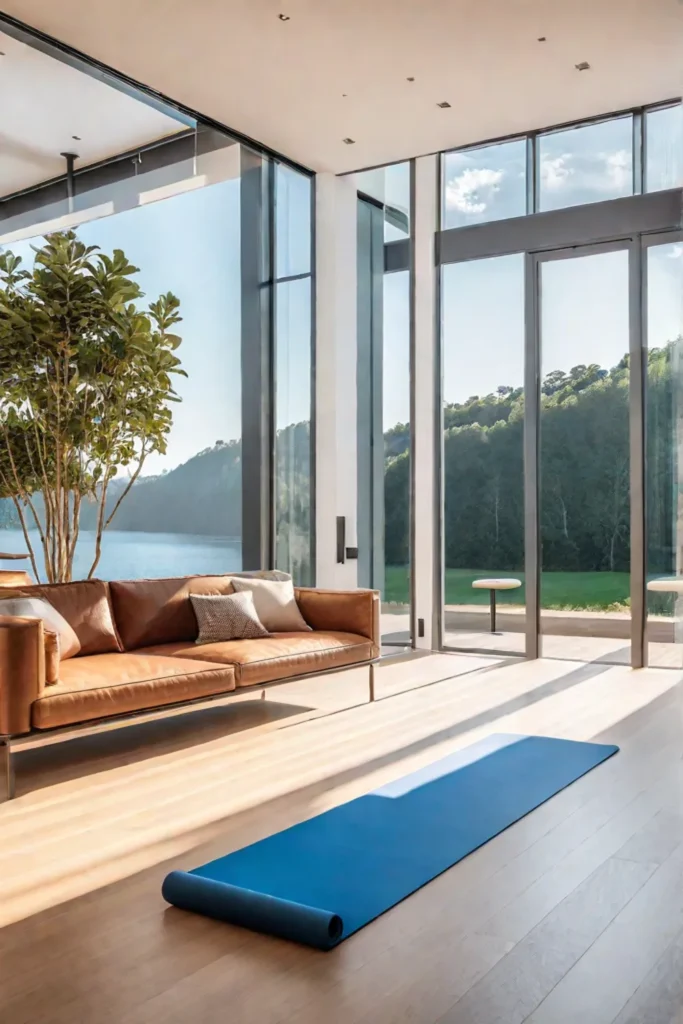
But the benefits of biophilic design go beyond just calming our nerves. Incorporating natural features into your living room can also boost your creativity, improve cognitive function, and promote a general sense of overall health and happiness. It’s no wonder that biophilic design has become increasingly popular in modern homes and workspaces.
Bringing Nature Inside Indoor Plants and Natural Light
When creating a biophilic living room, two of the most impactful elements are indoor plants and natural light. These features not only enhance the space’s visual appeal but also offer a host of functional benefits.
Indoor plants are true workhorses in a biophilic design. Not only do they purify the air and regulate humidity, but studies have also shown that their presence can reduce stress and improve concentration. When selecting plants for your living room, consider low-maintenance, air-purifying species like succulents, ferns, or snake plants. Strategically positioning these leafy friends can maximize their visual impact and functional benefits.
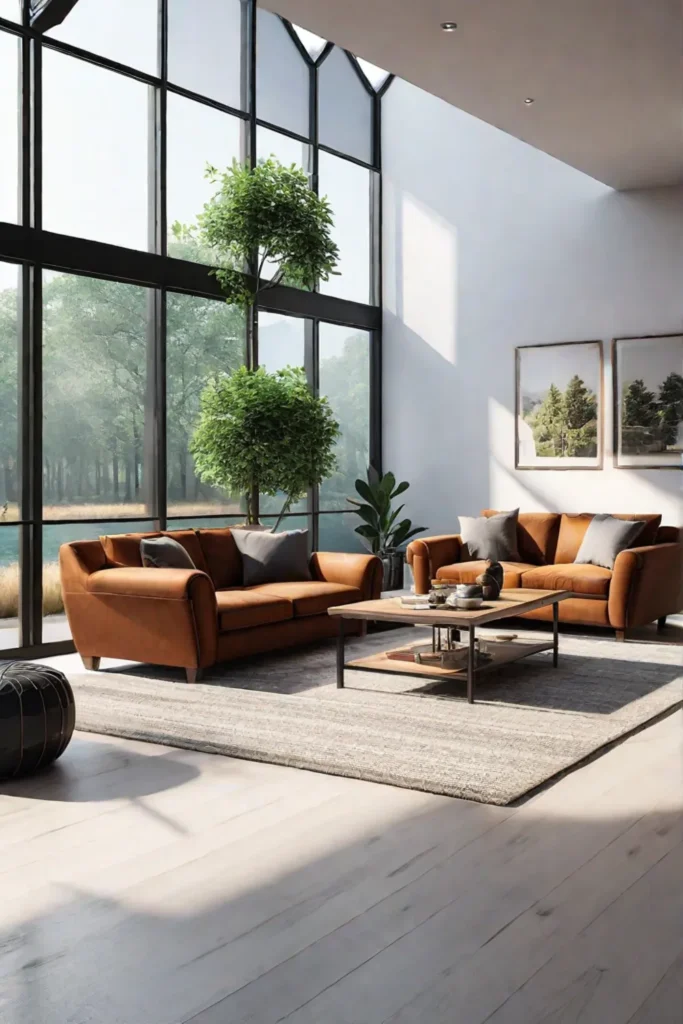
Equally important is the role of natural light. Exposure to sunlight has been linked to improved sleep quality, mood, and overall well-being. To optimize natural light in your living room, consider installing large windows, skylights, or sliding glass doors that seamlessly connect the indoor and outdoor spaces. This will brighten the room and create a stronger sense of connection to the natural world.
By incorporating indoor plants and natural light, you can transform your living room into a serene, rejuvenating oasis that nourishes your body and mind.
Sustainable Materials and Organic Textures
Biophilic design is not just about the visual elements; it’s also about the materials and textures you choose to bring into your living room. Sustainable, natural materials and organic finishes are crucial in creating a cohesive, nature-inspired aesthetic.
Using sustainable materials, such as reclaimed wood, stone, or rattan, contributes to a more eco-friendly design and adds a warm, tactile quality to the space. These natural elements can serve as the foundation for your living room, providing a visually striking and environmentally conscious backdrop.
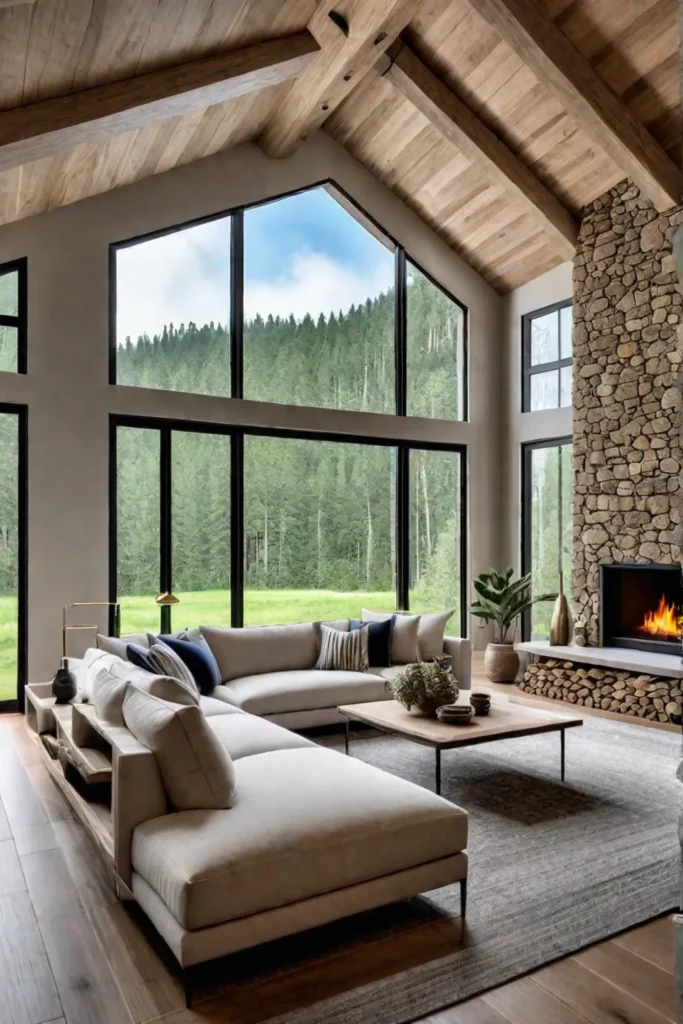
These sustainable materials complement organic textures like linen, wool, or jute. These natural fabrics and finishes can add depth, warmth, and a sense of coziness to your living room, further enhancing the biophilic experience. By blending smooth, earthy tones with rough, textured accents, you can create a modern living space and deeply connected to the natural world.
Bringing the Outdoors In Connecting with Nature
One key aspect of biophilic design is the seamless integration of indoor and outdoor living spaces. By creating a strong visual and physical connection between your living room and the great outdoors, you can foster a deeper sense of unity and belonging with the natural environment.
Large windows, sliding glass doors, and other transitional elements are crucial. These features allow natural light to flood the living room, providing unobstructed views of the outdoor landscape. Imagine stepping out from your cozy living area onto a lush patio or balcony, blurring the boundaries between the inside and the outside.
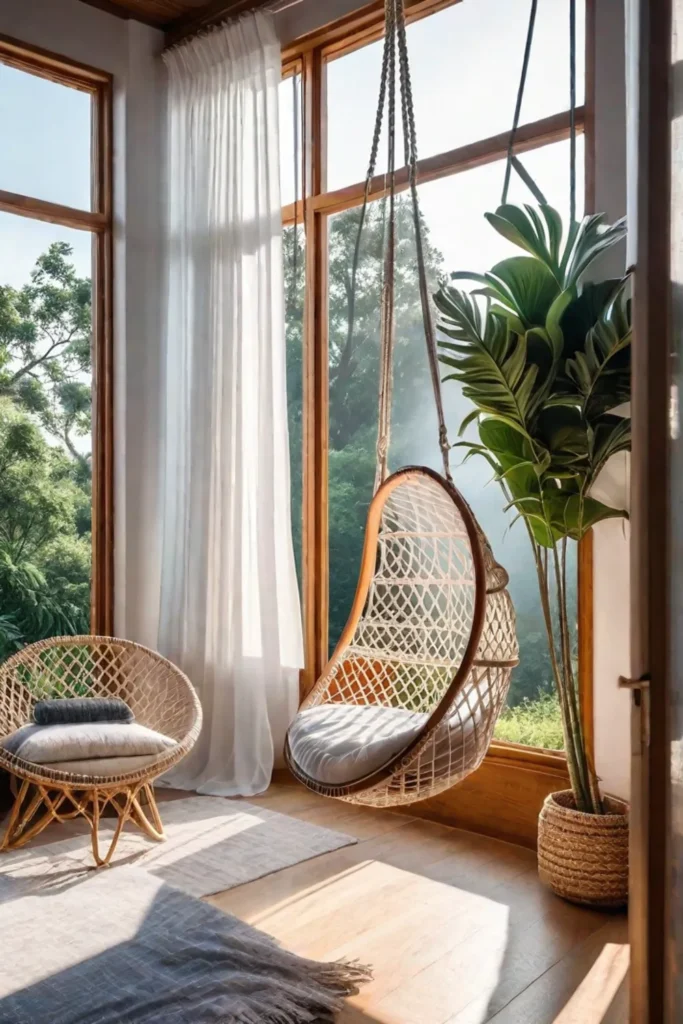
But the connection goes beyond just visual cues. Incorporating outdoor furnishings, such as patio chairs or benches, into your living room design can help bridge the gap between the two environments. By seamlessly blending natural materials and textures, you can create a cohesive, biophilic oasis that invites you to immerse yourself in the beauty of the natural world, even from the comfort of your own home.
Embracing Earth Tones and Organic Shapes
As you continue to layer natural elements into your living room design, pay close attention to your chosen colors and shapes. Earth tones and organic forms create a warm, inviting, and visually harmonious space.
Earth tones like greens, browns, and neutrals can evoke a sense of nature and promote a calming, relaxing atmosphere. These colors are often associated with the natural world and can have a soothing effect on the nervous system, helping to reduce stress levels. You can create a cohesive, nature-inspired aesthetic by incorporating these earthy hues into your living room through paint, furniture, or accessories.
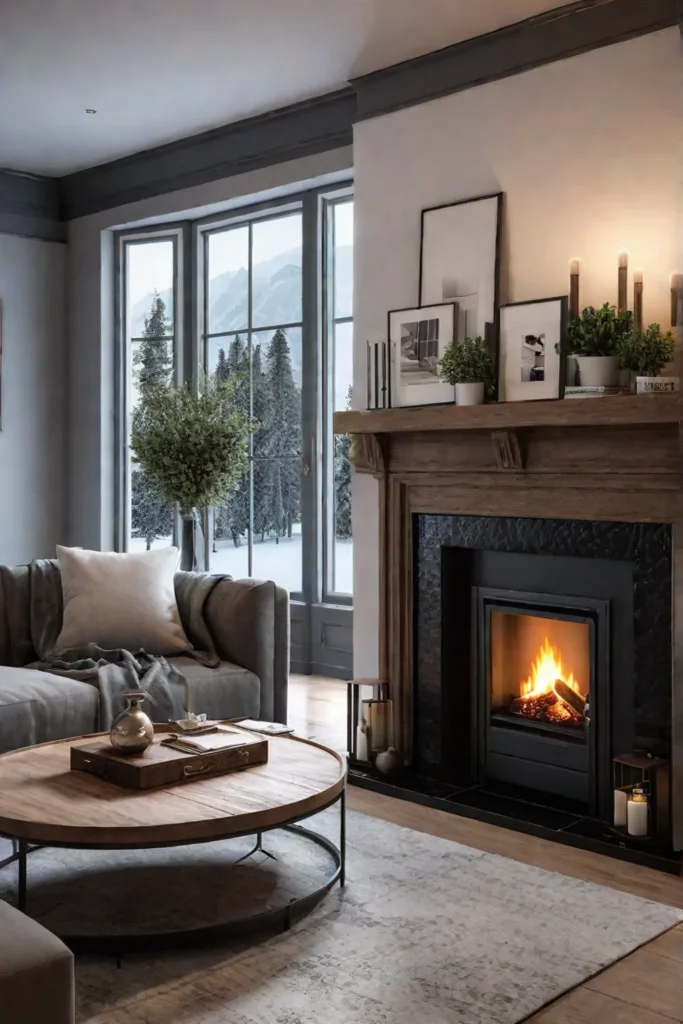
Organic shapes, on the other hand, can enhance the biophilic feel of your living room. Curves, flowing lines, and sculptural forms often mimic the natural world, creating a sense of fluidity and harmony. Whether it’s a curved sofa, a round coffee table, or a sculptural vase, these organic shapes can add visual interest and depth to your living room design.
By balancing earth tones and organic shapes with clean lines, natural textures, and minimalist design elements, you can achieve a living room that is both visually stunning and deeply connected to the natural world.
Enhancing the Senses: Incorporating Natural Sounds and Scents
Biophilic design is not just about the visual elements; it’s also about engaging all of your senses to create a truly immersive, nature-inspired experience. Incorporating natural sounds and scents into your living room can take your biophilic design to the next level.
For example, the soothing sound of running water can have a profound calming effect, lowering stress levels and improving mood. Consider installing a small tabletop fountain or a wall-mounted waterfall to bring this natural element into your living room. Alternatively, you can incorporate natural sound-producing elements like wind chimes or an indoor garden to create a multi-sensory biophilic experience.

In addition to sound, natural scents can enhance your living room’s biophilic ambiance. Certain essential oils, like lavender or eucalyptus, have been shown to reduce anxiety and improve sleep quality. Essential oil diffusers or scented candles can fill your living room with these calming, nature-inspired aromas.
Engaging your senses through natural sounds and scents can create a living room that feels like a serene, rejuvenating retreat from the outside world.
Balancing Biophilic Design with Modern Aesthetics
As you incorporate biophilic design elements into your living room, it’s important to maintain a careful balance between natural features and modern aesthetics. The key is to seamlessly blend the two, creating a visually stunning and harmonious space that feels both contemporary and deeply connected to the natural world.

Start by establishing a modern foundation with clean-lined, minimalist furniture. This sleek, sophisticated backdrop allows natural elements to take center stage. From there, you can layer in biophilic features like indoor plants, natural light, and organic textures, ensuring they complement the modern aesthetic.
Careful styling and accessorizing are also crucial for achieving this balance. Curate your decor with a discerning eye, selecting pieces that blend natural materials, such as wood or stone, with minimalist designs. This will help create a cohesive, visually appealing living room that feels modern and nature-inspired.
By striking the right balance between biophilic design and contemporary style, you can transform your living room into a space that looks stunning and promotes relaxation, creativity, and a deeper connection to the natural world.
Bringing it All Together: Designing a Biophilic Living Room.
Now that we’ve explored the various elements of biophilic design, it’s time to combine them and create a living room that truly embraces the beauty of the natural world.
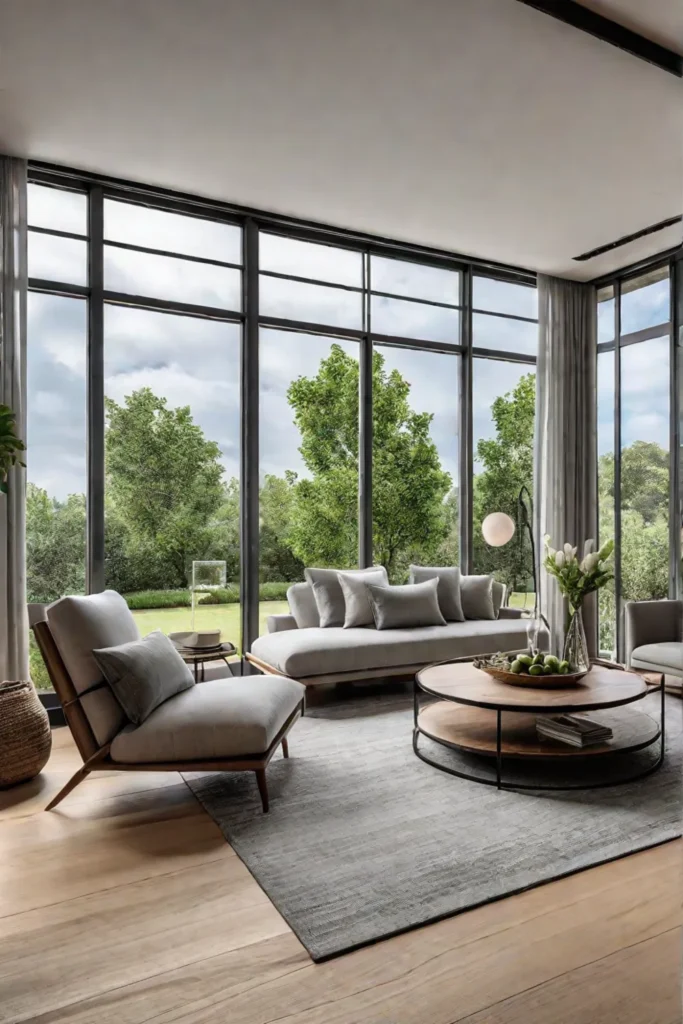
Start by incorporating a variety of indoor plants and strategically placing them throughout the space to maximize their visual impact and functional benefits. Choose low-maintenance, air-purifying species that thrive in your living room’s specific lighting conditions.
Next, focus on maximizing natural light. Install large windows, skylights, or sliding glass doors to allow the outdoors to flood in and create a seamless connection between the indoor and outdoor spaces. Complement this natural light with a carefully curated lighting plan, using a mix of table lamps, floor lamps, and wall sconces to enhance the overall ambiance.
Incorporate sustainable, natural materials like reclaimed wood, stone, or bamboo to serve as the foundation for your living room design. These eco-friendly elements will contribute to a more environmentally conscious space and add warmth and texture. Pair these materials with organic textiles like linen, wool, or jute to further enhance the biophilic aesthetic.
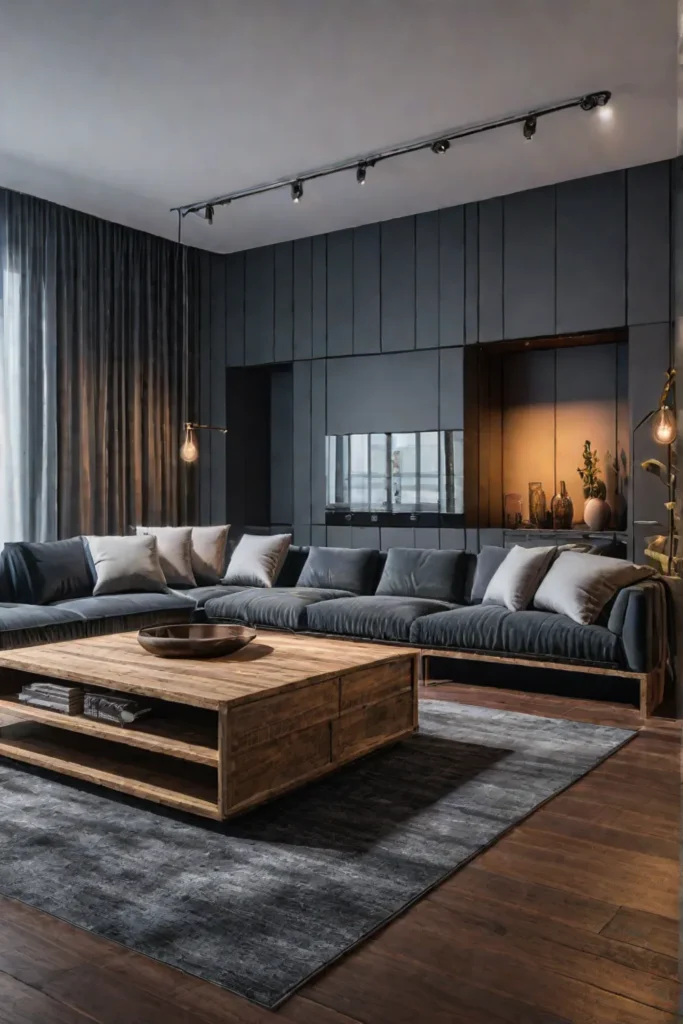
Regarding color and shape, embrace the beauty of earth tones and organic forms. Earthy greens, browns, and neutrals will create a calming, nature-inspired palette, while curved sofas, round coffee tables, and sculptural vases will add a sense of fluidity and harmony to the space.
Finally, remember to engage the senses beyond sight. Consider adding a small water feature, like a tabletop fountain, to introduce the soothing sound of running water. You can also use essential oil diffusers or scented candles to fill the room with calming, nature-inspired aromas.
By thoughtfully integrating these biophilic design elements, you can transform your living room into a serene, rejuvenating oasis that looks stunning and nourishes your mind, body, and soul. So why not bring the outdoors in and create a space that connects you with the natural world?
